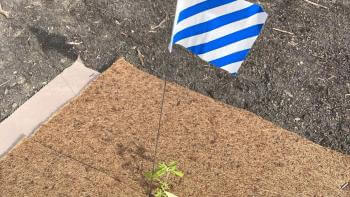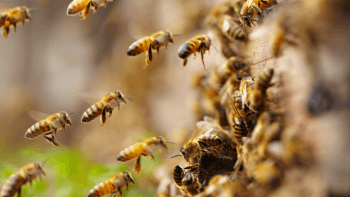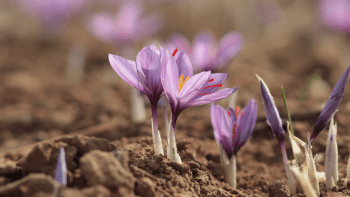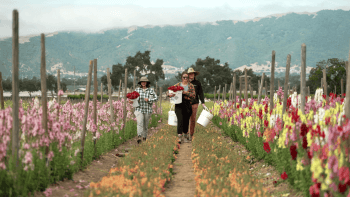Pajaro Plantings: Restoring the river
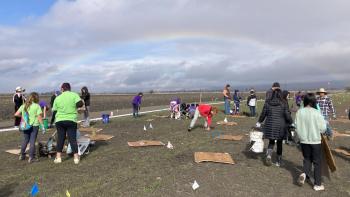
During the first week of December 2023, nearly 100 sixth and seventh grade students took a field trip to the Pajaro River Agricultural Preserve to help kickstart the restoration of a riparian forest. Over the course of the day, the students from the Indigo Program at the Oak Grove School District in San José planted roughly 200 native trees, shrubs, and forbs. By restoring important riparian habitat, this project promotes biodiversity as it provides for native wildlife and creates long-lost creekside habitat along a degraded stretch of the Pajaro River.
Over the last few years, the Open Space Authority has worked in partnership with Point Blue Conservation Science’s Students and Teachers Restoring a Watershed (STRAW) program to host several student planting days. “Student plantings are a highly valuable conservation model,” Rachel Clemons, Watershed Restoration Specialist at the Open Space Authority notes. “We are improving habitat while providing a hands-on environmental education opportunity and getting kids interested in protecting our planet.”
The Pajaro River Agricultural Preserve is a top conservation priority for the Open Space Authority, which was permanently protected in 2014. In the 1900s, farming operations were less focused on protecting adjacent waterways, which lead to the degradation of important riparian habitats. Now a thriving organic farm, a minimum 50-foot "agricultural buffer setback" creates a separation between the river from the farming operations while providing opportunities for important restoration work.
In 2020, the Open Space Authority partnered with the Santa Clara Valley Habitat Agency (Habitat Agency) to kick off the Pajaro River Agricultural Preserve Restoration Project. The project contains three different phases, with the goals of creating in-stream freshwater marsh habitat, generating a biodiverse, multi-layered riparian forest along the river, and eventually building up dynamic riparian and wetland habitat at the confluence of Llagas Creek and the Pajaro River.
In terms of the bigger picture, the restoration of this floodplain will have benefits across the region for people and wildlife. Retaining more water in the creek will benefit a variety of native plants and animals during the dry season, increase water quality, and help reduce the risk of flooding for downstream communities as witnessed during the 2023 Atmospheric River Storms.
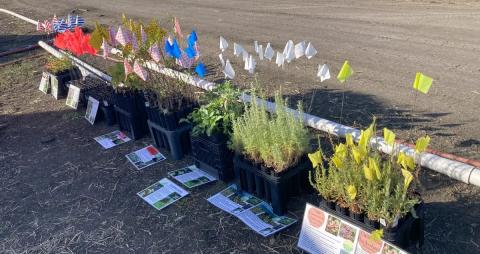
According to Nathan Hale, Senior Restoration Ecologist of the Habitat Agency, “Phase I of the project was intended to jump start getting native plants in the ground in areas above the top of the bank where there were no permitting requirements while serving as a pilot project to provide insights about what species of native riparian plants would flourish or fail in the sticky clay soils of the site.”
Phase I plantings were installed throughout 2022 and 2023. Clemons reported, “Phase II required permitting and grading – or changing the sloping of the dirt on the ground – and now we are planting more than 6,000 native plants in these re-graded areas.” Following Phase II grading within the riparian setback zone—specifically including laying back approximately 1,000 linear feet of the bank of the Pajaro River and creating a gradually sloped freshwater marsh transitioning to a wooded riparian bank—the project’s Phase II is well underway.
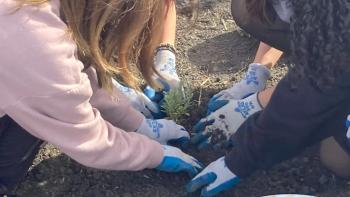
“The second phase of this project is much more complex,” Clemons notes. Much like many other waterways in the Bay Area, the Pajaro River and Llagas Creek were straightened and narrowed over time to promote fast drainage which was highly destructive to the habitat. To begin restoration, this had to be remedied. “During the summer and fall, the Habitat Agency led the grading process to create more gradual sloping throughout the approximately 4-acre project area, promoting a slower, more natural flow of water – creating the opportunity for a diversity of habitat types.”
Phase II of the project will wrap up in early 2024, while Phase III is in the early planning stages. Phase III will take place just downstream of Phases I and II, enhancing and creating wetland habitat right at the confluence of Llagas Creek and the Pajaro River. “This project is a great example of the fact that agriculture and natural resources protection can indeed work together,” Clemons notes.
Student plantings with Point Blue will continue throughout the winter into 2024.
